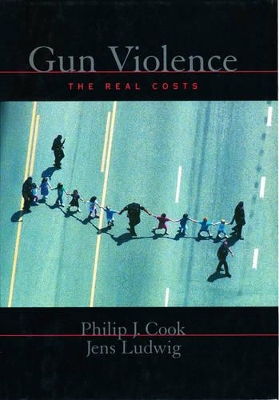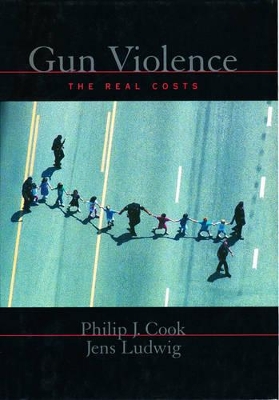Studies in Crime and Public Policy
2 total works
100 billion dollars. That is the annual cost of gun violence in America according to the authors of this landmark study, a book destined to change the way Americans view the problem of gun-related violence.
Until now researchers have assessed the burden imposed by gunshot injuries and deaths in terms of medical costs and lost productivity. Here, economists Philip Cook and Jens Ludwig widen the lens, developing a framework to calculate the full costs borne by Americans in a society where both gun violence and its ever-present threat mandate responses that touch every aspect of our lives.
All of us, no matter where we reside or how we live, share the costs of gun violence. Whether waiting in line to pass through airport security or paying taxes for the protection of public officials; whether buying a transparent book bag for our children to meet their school's post-Columbine regulations or subsidizing an urban trauma center, the steps we take are many and the expenditures enormous.
Cook and Ludwig reveal that investments in prevention, avoidance, and harm reduction, both public and private, constitute a far greater share of the gun-violence burden than previously recognized. They also employ extensive survey data to measure the subjective costs of living in a society where there is risk of being shot or losing a loved one or neighbor to gunfire.
At the same time, they demonstrate that the problem of gun violence is not intractable. Their review of the available evidence suggests that there are both additional gun regulations and targeted law enforcement measures that will help.
This urgently needed book documents for the first time how gun violence diminishes the quality of life for everyone in America. In doing so, it will move the debate over gun violence past symbolic politics to a direct engagement with the costs and benefits of policies that hold promise for reducing gun violence and may even pay for themselves.
Until now researchers have assessed the burden imposed by gunshot injuries and deaths in terms of medical costs and lost productivity. Here, economists Philip Cook and Jens Ludwig widen the lens, developing a framework to calculate the full costs borne by Americans in a society where both gun violence and its ever-present threat mandate responses that touch every aspect of our lives.
All of us, no matter where we reside or how we live, share the costs of gun violence. Whether waiting in line to pass through airport security or paying taxes for the protection of public officials; whether buying a transparent book bag for our children to meet their school's post-Columbine regulations or subsidizing an urban trauma center, the steps we take are many and the expenditures enormous.
Cook and Ludwig reveal that investments in prevention, avoidance, and harm reduction, both public and private, constitute a far greater share of the gun-violence burden than previously recognized. They also employ extensive survey data to measure the subjective costs of living in a society where there is risk of being shot or losing a loved one or neighbor to gunfire.
At the same time, they demonstrate that the problem of gun violence is not intractable. Their review of the available evidence suggests that there are both additional gun regulations and targeted law enforcement measures that will help.
This urgently needed book documents for the first time how gun violence diminishes the quality of life for everyone in America. In doing so, it will move the debate over gun violence past symbolic politics to a direct engagement with the costs and benefits of policies that hold promise for reducing gun violence and may even pay for themselves.
The objective of this book is to quantify the social costs of gun violence in order to help policy makers determine how many and which violence programmes to support. Drawing upon the most detailed and extensive economic study of the cost of gun violence, Cook and Ludwig provide detailed information about how the burden of gun violence is distributed in the US. Drawing upon this data, the book draws out the important implications for public policy. The burden of gun violence in America is valued at about $100 billion annually, and this heavy cost is distributed much more evenly over the population than the victimization statistics would suggest. Cook and Ludwig's examination of these costs lead them to propose a multifaceted policy agenda that includes both law enforcement and gun control measures.

